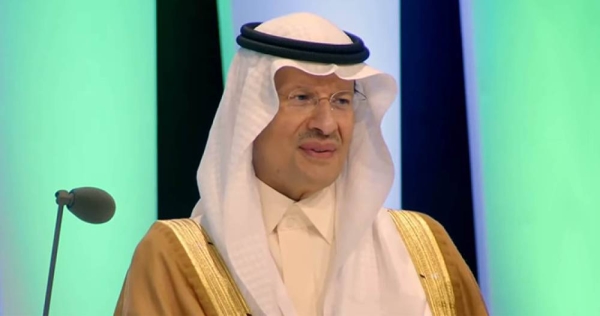
Saudi Aramco, the worlds leading integrated energy and chemicals company, released on Friday its 2017 Annual Review, highlighting strategic achievements that reinforce the company’s role as the number one producer of crude oil and condensate, adding value by integrating refining and chemicals production and expanding cleaner natural gas supply to meet domestic demand.
Amin Nasser, Saudi Aramco President and CEO, said that in 2017, Saudi Aramco progressed a slate of oil and gas mega-projects in the Upstream. He also highlighted that in the Downstream, the company continued to enhance its global network and completed key agreements designed to extract maximum value across the hydrocarbon value chain.
Significantly, he said Saudi Aramco’s safety performance remained strong and among the highest in the industry.
Nasser said that in 2017, Saudi Aramco continued to deliver on its long-term strategy of reliable supply to meet customer needs, thereby driving economic growth in the Kingdom and around the world.
“Despite uncertain, volatile market conditions, we continued to create long-term value to benefit our shareholder, customers, and partners. This year’s review underscores how Saudi Aramco is committed to playing its part in meeting the world’s energy needs today and tomorrow by continuing to invest wisely throughout the cycle and across the value chain,” he added.
The company will maintain its position as the world’s leading crude oil producer by production volume by tempering production from mature fields, accelerating younger fields and secondary reservoirs, and developing fresh reserves from new increments, while diversifying operations to capture value from strategic integration and expand natural gas activities, he continued.
The company produced an average of 10.2 million barrels per day (bpd) of crude oil, including condensate. Total raw gas processing averaged 12.4 billion standard cubic feet per day (scfd).
The company discovered two new oil fields (Sakab southeast of Haradh and Zumul in the Rub’ al-Khali) and a gas reservoir (Jauf, in the Sahba field), and continued its program to increase the capacity of the Khurais field by 300,000 bpd in 2018.
The company continued its efforts to increase domestic gas supplies, providing additional feedstock to drive industrial utilities expansion and improve national energy efficiency, while making more crude oil available for export.
Major project achievements included readying the Midyan non-associated gas field to produce 75 million scfd of natural gas and 4,500 bpd of condensate, displacing liquid fuels for use in power generation, and progress on the Fadhili Gas Plant designed to process up to 2.5 billion scfd of raw gas, a component in raising the company’s overall gas processing capacity.
Additional programs to expand capacity included the Hawiyah Gas Plant’s new processing facilities, which are expected to come on-stream in 2021, and add more than 1.1 billion scfd of processing capacity for a total of approximately 3.6 billion scfd.
The company started engineering, procurement and construction of a natural gas liquids deep recovery train at the Uthmaniyah Gas Plant that will recover ethane and other NGLs from natural gas produced from the Uthmaniyah Gas Plant and the Hawiyah Gas Plant expansion.
Saudi Aramco’s Downstream continued to provide an engine for the company’s growth and diversification, driving value across the hydrocarbon chain by expanding and integrating the company’s portfolio and partnerships, and creating additional revenue streams. In 2017, crude oil exports averaged 6.9 million bpd, and gross refining capacity was 4.9 million bpd.
Saudi Aramco completed the acquisition of Motiva, which includes North America’s largest single-site crude oil refinery in Port Arthur, Texas, and signed an agreement to participate in Malaysia’s Refinery and Petrochemicals Integrated Development (RAPID) project with Petronas, which includes a 300,000-bpd refinery, three million tons per annum of olefins capacity, and chemicals manufacturing units. In addition, a Memorandum of Understanding was signed with Norinco to build a 300,000-bpd capacity refinery and expand another in China.
In-Kingdom, the company’s Sadara joint venture with The Dow Chemical Company also witnessed a milestone with the full operation of the last of its 26 plants, a commissioning that takes Saudi Arabia’s chemicals industry to the next era. The facility achieved reliable operations at full design feed capacity of 85 million scfd of ethane and 53,000 bpd of naphtha.
“Our approach to downstream integration, expansion and petrochemicals growth is underpinned by our unwavering commitment to technology and innovation, and developing world-class collaborative partnerships to advance cutting-edge science,” Nasser stressed.
Saudi Aramco is continuing its pioneering thermal crude oil to chemicals (C2C) technology program that was successfully piloted in 2017 and delivered higher chemicals yield than previously achieved. Saudi Aramco also signed a memorandum of understanding (MoU) with Saudi Arabian Basic Industries (SABIC) to develop a fully integrated crude oil to chemicals (COTC) complex in Saudi Arabia that is anticipated to process 400,000 bpd and deliver an annual output of 9 million tons per annum of chemicals and base oils, in addition to transport fuels.
Saudi Aramco continued its long-standing tradition of positive outreach in line with the company’s strategic objectives.
With ongoing programs to boost competency in critical science, technology, engineering, and math (STEM) disciplines, Saudi Aramco continued to help prepare a highly skilled future workforce, a key focus for the Kingdom’s majority youth population. Outreach in 2017 also included support for higher education programs, including energy studies, sustainability and energy efficiency.






